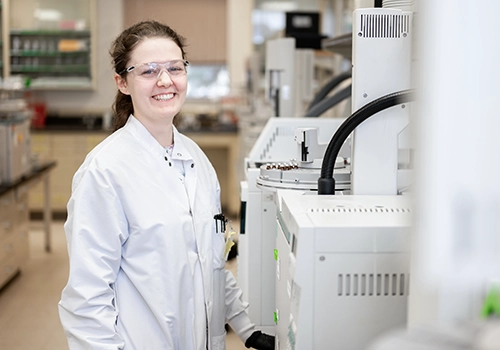Ensure Safety and Compliance
Particulate Matter Testing provides a total count of the number of visible or subvisible undissolved particles in your liquid injectable pharmaceutical or biopharmaceutical product. Our team performs these counts using laser diffraction instrumentation (USP <788>, Method 1) or through visual observation under a microscope (USP <788>, Method 2).
- USP Subvisible Particulate Matter in Therapeutic Protein Injections
- USP Particulate Matter in Injections
- USP Particulate Matter in Ophthalmic solutions
- USP Visible Particulates in Injections
- EP 2.9.19. Particulate Contamination: Sub-visible Particles
We are experienced with a wide range of product types, including:
- Pharmaceutical Injections and Infusions
- Biopharmaceutical Products and Therapeutic Protein Injections
- Ophthalmic Solutions
- Reconstitution and Carrier Solutions
- Purified Water / Water for Injection (WFI)
- Drug-Delivery Devices and Medical Devices in Static and Dynamic Models
- Packaging Components
Particulate Matter Testing Methods
To provide you with a comprehensive service offering for particulate matter testing, we support both methods outlined in the United States Pharmacopoeia (USP) General Chapter <788> for your product. Method 1 involved an automated instrument method, whereas method 2 leverages a manual counting method using visual observation.
Light Obscuration Particle Count Test (Method 1)
We use the HIAC liquid particle counter system to test parenteral products for sub-visible particle content using light obscuration. This instrumental method is robust across a range of sample matrices with varying viscosities, coloration and solvent composition, and it also provides accurate and repeatable counts.
Microscopic Particle Count Test
(Method 2)
We use a binocular microscope with appropriate micrometers and related accessories to test your products for sub-visible particle content using the visual observation method. This method is used for confirmatory evaluations or when the nature of the sample matrix is not compatible (e.g. suspended gas bubbles, emulsions, certain buffered solutions or biologics) with the automated instrument and detection sensor. As a manual method, it offers advantages in reliability from added judgement and discernment but is often time-intensive to achieve acceptable accuracy and reproducibility.

Custom Particulate Matter Studies
Integrated Laboratory Services
When your team needs additional support, our scientists & professional services are ready. Our state-of-the-art facilities and highly trained experts add power to your project.